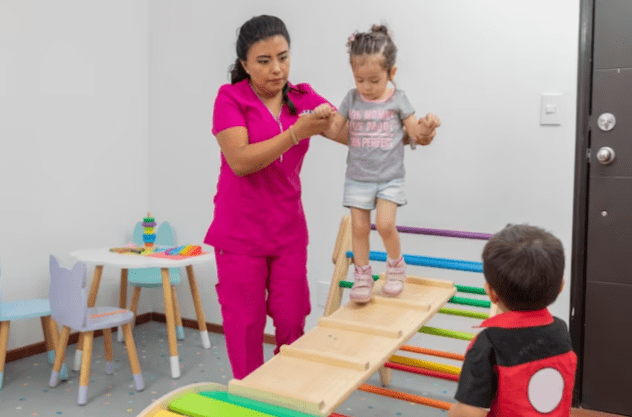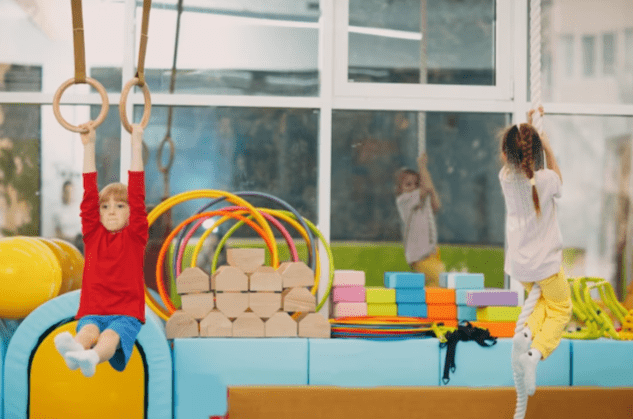Nine months of waiting for your little miracle to arrive can seem like an eternity. But one thing is for sure—once they arrive, you want their nursery, and home in general, to be as safe as possible. You can have a ton of fun decorating your baby’s room with a nursery checklist, but your baby’s nursery safety is the primary concern. According to the Consumer Product Safety Commission (CPSC), over 60,000 injuries from items in nurseries occurred annually in children under five the last few years—each requiring a trip to the emergency room. And accidents can happen in the blink of an eye.
When it comes to baby safety, first and foremost, childproof their room as if they’re already a toddler, even if your child hasn’t yet arrived or is only a newborn. And keep reading to learn all about baby room safety, including crib safety, baby safety products, and safe sleep for babies, so you and your family can all rest easier.
The most important job for parents is to keep their child safe from harm. Because newborns will spend most of their time sleeping, parents need to make sure the nursery is a safe place. Following a few tips can help keep babies healthy and happy.
Cribs

- Use a crib manufactured after 2011, which is when safety standards were changed, to make sure you are using the safest model.
- Use a firm mattress that is the correct size for the crib. There should be no gaps.
- If you can fit 2 fingers between the mattress and the side of the crib, it is too loose.
- Cover the mattress with a snug-fitting crib sheet.
- The slats of the crib should be no more than 2 and 3/8 inches apart. A baby’s head could get trapped between widely spaced slats.
- Do not place pillows, blankets, bumper pads or stuffed toys in the crib with the baby. Use sleepers or sleep sacks instead of blankets.
- Remove any hanging toys or mobiles when the baby is able to get up on all fours (usually around 5 months of age).
- Never use a crib with loose or missing pieces.
- Never us an inflatable (blow-up) mattress in a crib.
Portable Cribs and Playpens
- Use a playpen manufactured after 2013, which is when the last safety updates were issued.
- Never add additional mattresses.
- Never leave the side of a mesh playpen down. A baby could become trapped and suffocate in the mesh.
- Once a baby can pull himself up to standing, keep large toys out of the playpen. He might try to use these items as steps.
- Remove all toys, stuffed animals, pillows, cushions and blankets before putting baby down to sleep.
Changing Tables
- Always use the changing table’s safety belt to help prevent your baby from falling.
- Keep at least one hand on the baby at all times, even when using the safety belt.
- Never leave a baby on the changing table unsupervised.
Where Should You Put The Crib In a Nursery?
Decorating your nursery is an exciting way to flex your creative muscles. But there are some baby safety guidelines you should keep in mind while you have your fun. First off, never place their crib or bassinet under a window. Your baby can easily get tangled in curtains, or wind up with a cord from them, a blind, or any electronics such as a baby monitor around their neck. There are other hazards that come with windows and babies, toddlers, and older children more on those in a bit.
Wherever else you consider placing their crib or bassinet, do a thorough check of the area to be sure there’s nothing else that could pose a risk, like things your child could reach or that might fall on them. One good placement may be close to the door. That way, if they start crying, you can get to them faster to calm them down.
Why Can’t You Put a Crib By The Window?
Sure, it may seem like a good idea to put your crib by a window so your baby can get some fresh air. But, please refrain. No matter how high off the ground it is, it can still pose a threat. Many toddlers are climbers, so you want to limit any risk of them getting to the window. Keep your nursery furniture away from the window for the same reason. Don’t assume that the screen can prevent them from falling out. Also, be sure to supervise your child if they’re in another room with open windows.
Installing window guards or stops that prevent the window from opening more than four inches can help too. (The majority of kids up to 5 years old can fit through a six-inch opening.) If you have double-hung windows, only open the top part. In short: Many things in your child’s environment can seem harmless, but, like windows, they’re not.
How Can I Tell Whether My Crib Is Safe For My Baby?
Baby crib safety guidelines have changed a lot over the years. What was once considered safe is no longer. Take drop-side cribs, for example. Drop-side cribs have a moveable side that slides down so you can get to your baby without having to lean over it. Once considered a safe option, over the years many kids have been injured or even died because of them. They’re so risky to children that since 2007, CPSC has issued recalls for nearly seven million of them. And the American Society For Testing & Materials (ASTM), the group that creates voluntary manufacturing standards for cribs, no longer permits their sale.
Despite that, dozens of incidents are still reported to CPSC each week involving different manufacturers. Drop-side cribs also tend not to be as structurally sound as ones with fixed sides. They’re not great when it comes to withstanding regular wear-and-tear either. (We should note, however, that cribs that have a side that folds down are different from drops-sides, and don’t pose the same danger.)
Also, don’t put your baby in an older crib model—meaning prior to 2011, when CPSC safety standards were last updated. For maximum baby crib safety, when you’re assembling yours, always follow the instructions. If they’re hard to understand, you don’t have them, or there are any issues with any parts (including leftover ones after you’ve assembled it), check the manufacturer’s site or call them. And don’t attempt to replace any parts, like screws, with your own, since they haven’t been tested for crib safety. Another thing to check is the distance between the slats of the crib, which shouldn’t be any more than 2 ⅜ inches apart. This will avoid the risk of your baby’s head or limbs getting stuck in them.
Regularly check your crib to confirm that all its parts are secure and tight. If they’re not, avoid the temptation to, say, lean a loose side up against the wall. This can create a gap that your child can get caught in or suffocate in. And remove any mobile or hanging toys from above their crib when your baby is strong enough to get up on all fours—typically when they’re around 5 months old. All in all, the best way to ensure that the crib you’re using or considering buying—or any other item in your nursery or home—is safe for your child is by searching it on the CPSC recall page.
Crib and Bassinet Safety
Sudden infant death syndrome (SIDS) is the unexplained death of an infant under 1. While the exact cause of SIDS remains under investigation, research has shown that a safe sleeping environment has an impact on prevention.
Safe sleep guidelines are recommended to help reduce the risk of sleep-related infant death, including:
- Always lay babies to sleep on their backs on a firm, flat surface. A mattress should fit snugly into the frame of the crib or bassinet, with no gaps.
- Avoid co-sleeping. Your baby should have his or her own sleeping space in a crib or bassinet. It’s recommended that the baby sleeps in the same room as the caregiver for at least the first six months of life.
- Do not place loose blankets, bumpers, pillows or stuffed animals in a crib with a sleeping infant.
Nursery safety Tips
Additional safety recommendations in the nursery include taking steps to:
- Place a night light in the nursery and any nearby bathroom and hallway.
- Install smoke and carbon monoxide detectors, and check their function regularly.
- Anchor heavy furniture, such as dressers and bookshelves, to the wall. Safety straps or wall anchor kits can be purchased separately if the furniture does not come with them.
Safety outside the Nursery
While it’s important to keep furniture inside the nursery safe for infants, you also should pay attention to other furniture in your home, including:
- Never leave a baby unattended on an elevated surface.
- Place bassinets or car seats on the floor rather than on tables, counters, beds or other furniture.
- Place bumpers or guards on sharp corners of furniture.
Toy safety
Toys are a fun and important part of your baby’s development. Follow these tips to keep your baby safe while encouraging their learning:
Choose open storage without sharp corners like baskets or canvas bins to keep your baby’s toys organized. Remove the lids from toy bins. Injuries can happen if a lid falls on your baby or accidentally traps them inside your toy bin.
Choose toys that are age-appropriate by looking for the age recommendations on the packaging. Keep toys with loose pieces, small pieces, strings or cords out of reach until your child: is at least 3 years of age and has stopped putting non-food items in their mouth.
Transitioning to the Next Bed

Each new milestone in your baby’s life is a time for celebration.
It’s time to make changes to your baby’s sleep environment to protect them from harm when your baby shows the following signs:
Rolling over
- Move them from a bassinet to a crib or cradle.
- Stop swaddling your baby.
- Pushing up on their hands and knees
- Move them from a cradle to a crib.
- Place the crib mattress in its lowest position.
- Remove mobiles and toy bars.
- Check that there are no hazards within arm’s reach, including furniture, window covering cords, lamps, corded baby monitors and small objects.
- Secure your furniture to the wall if you haven’t already done so.
- Pulling themselves up to stand
- Keep all toys out of the crib during every sleep so your baby can’t use them as a step to climb out of their crib.
- Trying to climb out of their crib
- Move them to a toddler/junior bed.
- Don’t use portable bed rails for children under 2 years old.
- Check for any new hazards that your toddler might find as they explore their room.
- Check that cords aren’t accessible by climbing on furniture or toys.
Also:
- Install safety gates to limit access to stairs.
- Make sure that household cleaners, laundry detergents, button batteries, small magnets and other harmful substances and products are out of sight and out of reach.
- Keep toys and other safe, appealing items at ground level so your baby can reach them.
Products your Baby doesn’t need
- Parents and caregivers often assume that if a nursery product is sold in stores it must be safe.
- Consumer products in Canada are not approved or tested before they’re available in stores. It can be difficult to know what is safe for your baby.
- Before you buy, check for product recalls and advisories.
Ask yourself if:
- The product is safe for your baby
- Your baby really needs this product
- It’s safe for your baby to fall asleep in the product
- You know how to use this product safely
The manufacturer or importer is responsible for making sure that the products they supply in Canada are safe. Health Canada monitors the marketplace and takes action when and where we identify an issue.
You can help by reporting any incidents or unsafe products.
Some products that you may find in stores that your baby doesn’t need and that might not be safe include:
- Indoor hats
- Crib wedges
- Soft bedding
- Car seat covers
- In-bed sleepers
- Baby hammocks
- Sleep positioners
- Bed-side sleepers
- Teething necklaces
- Baby nests, pods and loungers
We hope you found this information helpful in your journey to create a safer environment for your family. At GuardWell Safety, we understand that every home is unique, and so are your child-proofing needs. That’s why we offer a Free Child-Proofing Consultation tailored to your specific requirements. Let our experts help you identify potential hazards and provide personalized solutions to make your home a secure haven for your little ones. Book your free consultation today and take the first step towards peace of mind.






